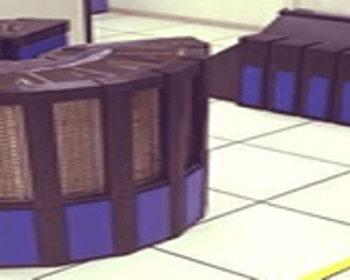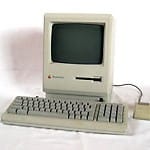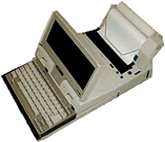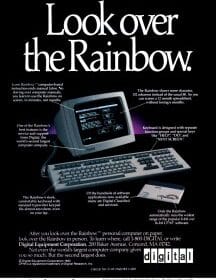Category: Computers
Apple Macintosh Plus
Commodore Amiga 1000
PS/2
IBM’s second generation of personal computers. Released to the public in 1987, the PS/2 series introduced three advances over the PC series: 3.5″ 1.44 megabyte microfloppy disks, VGA and 8514 graphics display standards, and the Micro Channel bus architecture. The 3.5″ disks and VGA can be easily installed on other…
PC Convertible
Gavilan SC

Designed by Manuel Fernandez, owner and founder of the Gavilan Computer Corporation, the Gaviian SC was one of the earliest portable computers and was the first machine dubbed a “laptop”. Although most portable computers were not the ultra light and powerful machines we know of today, it was one of…
Rainbow 100
Connection Machine
The Connection Machine was the first commercial computer designed expressly to work on simulating intelligence and life. A massively parallel supercomputer with 65,536 processors, it was the brainchild of Danny Hillis, conceived while he was a graduate student under Marvin Minsky at the MIT Artificial Intelligence Lab. At it’s height,…
IBM PC-AT
Apple Macintosh
Apple Computer debuted the Macintosh in 1984. It was the first personal computer to feature a graphical user interface, a system of operating a computer by manipulating windows, menus, and icons with a mouse. It’s much easier to use than the traditional system requiring precise text input, and revolutionizes the…
Apple Macintosh Plus
Commodore Amiga 1000
PS/2
IBM’s second generation of personal computers. Released to the public in 1987, the PS/2 series introduced three advances over the PC series: 3.5″ 1.44 megabyte microfloppy disks, VGA and 8514 graphics display standards, and the Micro Channel bus architecture. The 3.5″ disks and VGA can be easily installed on other…
PC Convertible
Gavilan SC

Designed by Manuel Fernandez, owner and founder of the Gavilan Computer Corporation, the Gaviian SC was one of the earliest portable computers and was the first machine dubbed a “laptop”. Although most portable computers were not the ultra light and powerful machines we know of today, it was one of…
Rainbow 100
Connection Machine
The Connection Machine was the first commercial computer designed expressly to work on simulating intelligence and life. A massively parallel supercomputer with 65,536 processors, it was the brainchild of Danny Hillis, conceived while he was a graduate student under Marvin Minsky at the MIT Artificial Intelligence Lab. At it’s height,…
IBM PC-AT
Apple Macintosh
Apple Computer debuted the Macintosh in 1984. It was the first personal computer to feature a graphical user interface, a system of operating a computer by manipulating windows, menus, and icons with a mouse. It’s much easier to use than the traditional system requiring precise text input, and revolutionizes the…





